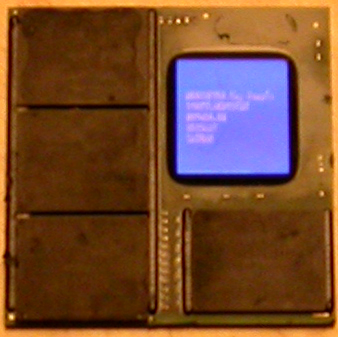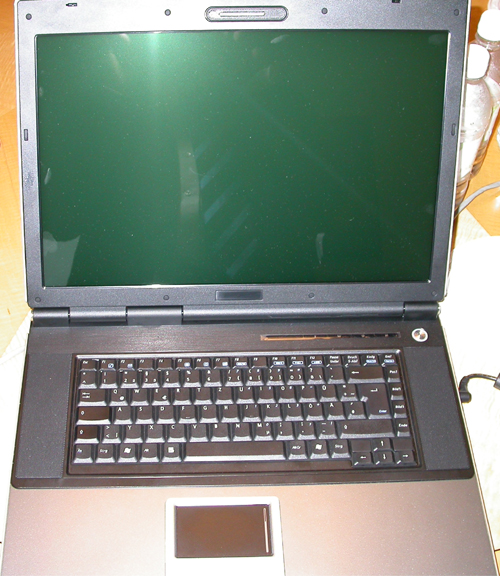
Original Link: https://www.anandtech.com/show/1885
Introduction
We've stated many times before how much we respect NVIDIA for getting their parts into consumers' hands on the day of their release. We've also mentioned how frustrating it is that ATI can never seem to get their gear out on the day of "release". This appears to again be the case right now for ATI's new laptop version of the X1600, the Mobility Radeon X1600. ATI's launch partner, ASUS, will be selling the part in their upcoming A7V notebook which is launching in Asia today, but the rest of the world will not be able to buy this solution just yet.
The X1600 is a mid-range graphics solution that is meant to perform at about the same level of the X800 GTO and the 6600 GT. The mobile version will probably be a good solution for laptops, as it offers good quality graphics without generating excessive heat and quickly sapping up all of your battery life.
When ATI announced the X1000 lineup two months ago, they had planned on having the desktop X1600 out on the 30th of November. Unfortunately for ATI, this day has come and gone, and there are still no X1600s to be found for sale at the time of this writing. The Mobility Radeon X1600 (MRX1600) is officially scheduled to be released today (December 5th) in Asia with a US release scheduled for mid-January, but we aren't sure when they will really be available to buy in either region. ATI assures us that ASUS has notebooks ready to sell, but availability unconfirmed as of yet.
The Mobility Radeon X1600 is essentially the same as its desktop counterpart with the exception that it is clocked slightly lower. Here are the specifications:
12 Pixel Pipes
5 Vertex Pipes
4 Texture Units
4 Render Back-Ends
128 Max. Threads
Core clock: 470
Memory clock: 470
Compare this to the desktop version(s) of the proposed X1600 and we see much lower clocks. The X1600 XT was announced at launch to have 590MHz core and 1.38GHz memory clock speeds and 256MB of RAM. The MRX1600 is closer in implementation to the potential X1600 Pro, which might have 500MHz core and 780MHz memory clocks. The other major downgrade the mobile that mid-range part gets is in memory size to 128MB. The coolness factor comes in when you realize that ATI can pack the GPU and all of its RAM on a 46mm X 46mm square package.

The Card and PowerPlay 6.0
So, we have already mentioned that this part is similar to what will some day be the desktop X1600 series. Clock speeds and memory size aside, the part looks alright for its target market. The card needs to be able to run moderately sized panels at good quality and speed. Of course, battery life is important in this market as well, but we didn't have enough time with the system to run any battery life tests. The ASUS A7V in which we tested the MRX1600 was running a 2GHz Pentium M with 1GB of RAM. The system has a 1440x900 wide screen panel attached to it, which ends up requiring about the same pixel pushing power as a 1280x1024 display.
We ran a few brief tests just to see how the system performed. We wanted to know if we could play games at the maximum resolution without any problems. The A7V ran the tests that we tried quite well. Here's a look at our data.
| Day of Defeat on Mobility Radeon X1600 | ||
| 1024x768 | 1440x900 | |
| No AA | 43.7 | 42.7 |
| 4xAA | 43.7 | 42.8 |
| Quake 4 on Mobility Radeon X1600 | |||
| 800x600 | 1024x768 | 1152x864 | |
| No AA | 60.9 | 45.7 | 39 |
| 4xAA | 40.8 | 30.8 | 26.6 |
PowerPlay 6 has most of the same features of PowerPlay 5. The GPU is able to run at 0.95V, the number of PCIe lanes is dynamically configurable, and clock gating is still a major feature, but there is one new addition that is quite interesting. The concept isn't new, but this is the first time that ATI has gone down this path.
We've spoken about leakage currents in some of our CPU articles before, but the basic problem of leakage is that high speed transistors end up drawing power even when they are off. One of the unfortunate side effects of trying to make it easier for electrons to flow through something quickly and easily is that it becomes more difficult to prevent them from doing so. And process shrinks don't help the problem either. ATI is combating the problem in its latest mobile parts by implementing reverse biasing. The idea is that in lower power modes, current flow through transistors that are off can be reduced if a voltage is actively applied in the opposite direction. ATI indicates that their method can reduce power by up to 20%.
Final Words
There's no denying the quality of ATI's parts when they are actually available to the public for purchase. We understand that they've had some setbacks in the past year or so with their lack of high-end competition to NVIDIA's excellent 7800 line, but now that prices are starting to come down for their X1800 series, things are looking better for ATI in general.
That being said, we can't repeat enough how frustrating it is that ATI can't seem to get their parts out when they say they will. This is just unacceptable, and reflects poorly on ATI as a company. Although we are definitely more concerned with how their equipment actually performs over when it comes out, we would still very much like to see the parts on shelves the day that they are released. It's more than a matter of corporate and professional courtesy; this has become a blatant abuse of the enthusiast community to promote an image through the paper launch of products. All we have for months beforehand are promises of a product that may or may not live up to initial reviews.
The fact that this part is supposedly being released today only in Asia means that we'll have to wait at least a month to get our hands on one here. But frankly, we're somewhat skeptical about actually seeing any for sale in Asia today or in the US in mid-January. The situation that we have here with this ATI part is somewhat confusing. We're not sure why ATI feels it can paper-launch a mobile version of a desktop card that was announced two months ago, slated to show up last week and is still nowhere to be found. We would be incredibly surprised if we actually do start seeing some MRX1600 based notebooks for sale on the day of release in Asia before the desktop version hits anywhere.
We have to insist that it is not impossible to actually sit down and properly plan out a launch based on NVIDIA's stellar performance for more than a year now. Every time we sit down with ATI, we tell them something along the lines of "our readers need to see availability on the day that a product is announced", but it seems that our words fall on deaf ears. The graphics market is cluttered enough without a bunch of apparitions floating around that, more than likely, won't show up for weeks or even months after we were told they would. And what happened with the X1800XL All-In-Wonder? The situation is absolutely not acceptable.








